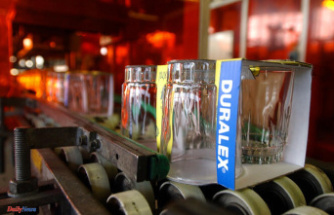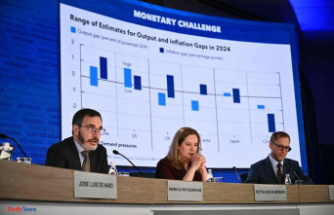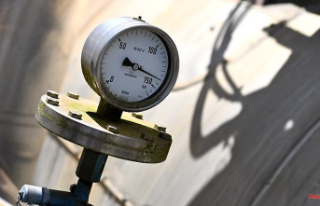Goods traffic on the Rhine is slowed down by low water levels. Above all, the limited coal transport is currently causing concern. According to economists, this is contributing to the decline in the German economy. Accordingly, GDP could fall below one percent.
According to economists, the low water levels on the Rhine - the most important German waterway - make a recession of the already weakening economy even more likely. "In any case, we expect that the German economy will fall into a slight recession from the third quarter and that growth in 2022 should only be 1.2 percent," says Stefan Schneider, Chief Economist for Germany at Deutsche Bank. "If water levels continue to drop, growth could also drop to just under one percent."
Due to the tense energy situation, the limited coal transport for the power plants along the Rhine is probably the biggest problem this time. Higher transport costs are likely to create additional upward pressure on the producer prices of the goods concerned.
The Landesbank Baden-Württemberg sees it in a similar way. "One might not make a mistake if one assumes at present that the gross domestic product will be burdened by a quarter to half a percentage point as a result of the low water," said LBBW economist Jens-Oliver Niklasch. The situation is more dangerous this time than in the low water of 2018, "because the supply situation is already tense and, above all, the coal-fired power plants, which are of outstanding importance for electricity generation, are likely to be more affected".
The Kiel Institute for the World Economy also sees further adversity looming for German industry. "Since mid-July, the water levels in the Rhine have been so low that they have had a noticeable impact on freight traffic," said IfW economist Nils Jannsen. "In the past, industrial production has been pushed down by about 1 percent when water levels have fallen below a critical level for a 30-day period."
In 2018, when shipping on the Rhine was last hampered by low water for a long period of time, industrial production was down by around 1.5 percent at its peak. The Rhine is an important shipping route for commodities such as grain, chemicals, minerals, coal and oil products such as heating oil. Companies keep a close eye on water levels. The water level on the Rhine has recently fallen further due to the hot summer weather and the lack of rainfall.
The water level at the Kaub narrows near Koblenz is particularly low: the reference water level is only 52 centimeters. But ships need about 1.5 meters to be able to drive fully loaded. "We continue, but can only load about 25 to 35 percent of the ship's capacity," said recently the director of the DTG shipping cooperative, Roberto Spranzi, which operates around 100 ships on the Rhine. "This means that customers often need three ships to transport their cargo - instead of just one."
In Baden-Württemberg, people are extremely concerned about the development. After several weeks of almost no rain, there was an "extraordinary low water situation in the state," according to the Baden-Württemberg State Institute for the Environment on August 8, 2022. Without further precipitation, the water levels in numerous bodies of water in Baden-Württemberg will approach new low records in the coming days, according to the forecast. The water levels on the Rhine, Neckar and Danube are currently mostly below the lowest water level in an average year.
Overall, around 80 percent of the gauges in Baden-Württemberg show low water. This also applies to Lake Constance: at the Konstanz level, the water level was 316 centimeters on Monday. That's around 90 centimeters less than usual for this time of year. "With the current water level, the lake level is at a level that is usually only reached in the second half of October," emphasize the experts from the state institute.












